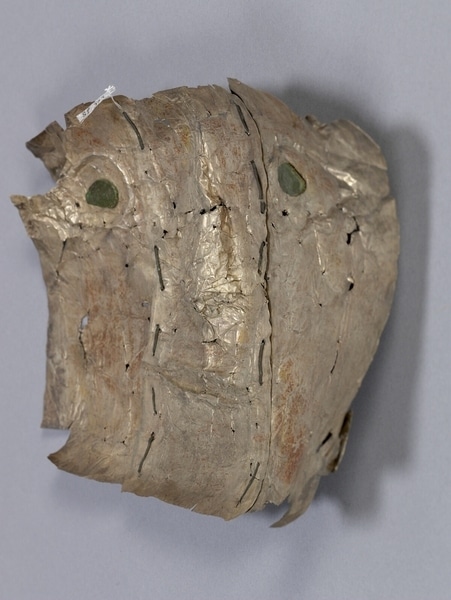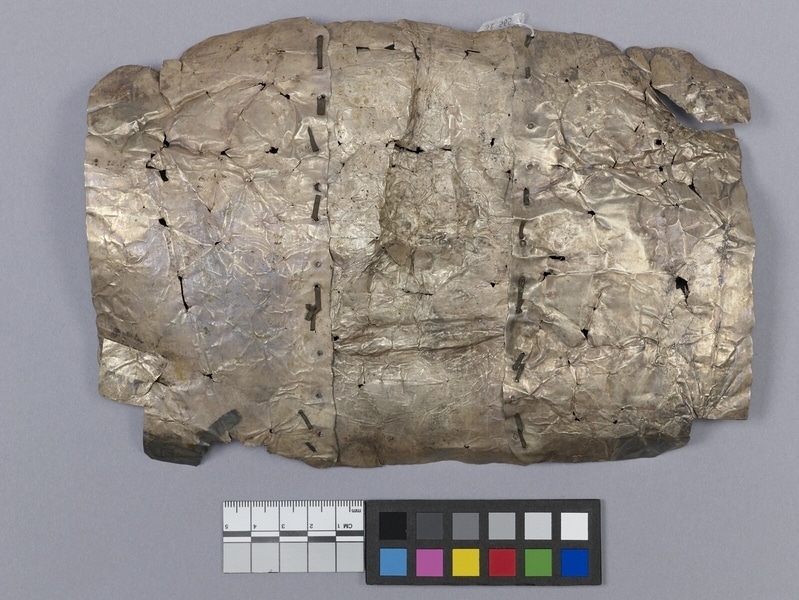Mask Item Number: Sf565 from the MOA: University of British Columbia




Description
A rectangular foil mask with humanoid features constructed of three sheets of foil joined lengthwise by strap-like staples. The embossed features include a large nose, thin-lipped mouth, and teardrop-shaped eyes. The eye pupils are flat green stones, also teardrop-shaped.
History Of Use
In Chimu times, the dead were placed in a seated position and wrapped with multiple layers of cloth. In burials of important people, masks fashioned from sheet metal were then positioned over the face area of the mummy bundle (Moseley). Like this specimen, masks were frequently covered with paint, exposing very little of the precious metal. The tear-drop eye shape derives from the Lambayeque Style influence of the far north coast.
Iconographic Meaning
In Chimu art, "There is frequent representation of human beings with outward or upward slanting eyes. These objects presumably accompanied members of the aristocracy to their graves and served as emblems of an as yet undecoded system of ranks and statuses" (Moseley).
Narrative
Chimu style, Late Intermediate Period; 1000-1470 C.E.
Item History
What
- Name
- Mask
- Identification Number
- Sf565
- Type of Item
- mask
- Material
- paint ?, copper metal, jadeite mineral ? and silver metal
- Manufacturing Technique
- hammered, stapled, silvered, embossed and painted
- Overall
- height 3.0 cm, width 22.8 cm, depth 16.2 cm
Where
- Holding Institution
- MOA: University of British Columbia
- Made in
- Peru
When
- Creation Date
- between 1000 and 1470
- Collection Date
- between 1949 and 1966
- Ownership Date
- before May 4, 1981
- Acquisition Date
- on May 4, 1981
Other
- Item Classes
- metalwork
- Condition
- poor
- Accession Number
- 0711/0067